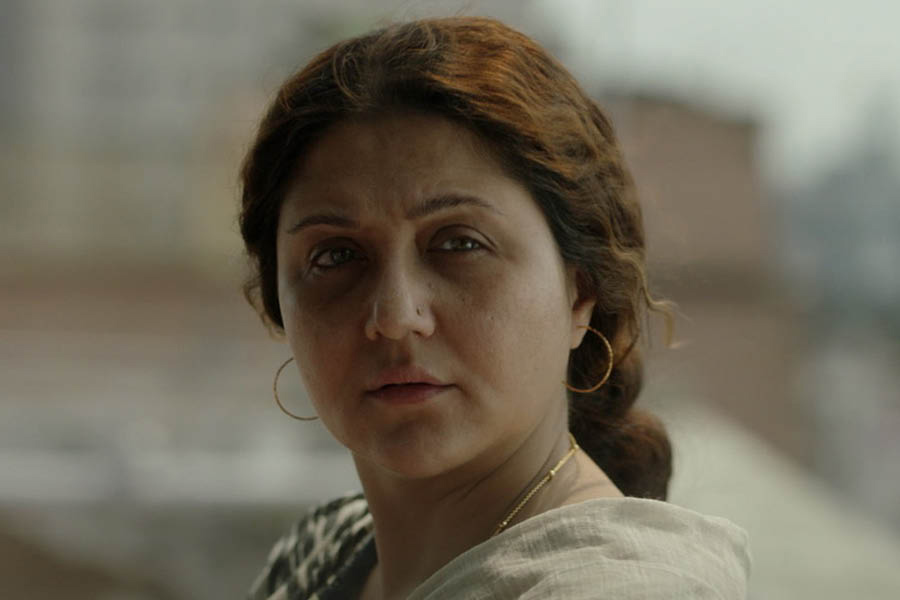The Hoichoi thriller series Bijoya, featuring Swastika Mukherjee in the role of a mother fighting for justice for her son, tackles a disturbing social evil: ragging in educational institutions. The Sayantan Ghosal-directed show succeeds in portraying the raw emotions of a grieving mother but not as much in starting a conversation around ragging.
Bijoya (Swastika Mukherjee) is a widow living with her son Nilanjan (an impressive Debdutta Raha) in Naihati. Months after joining a reputed engineering institute in Kolkata, Nilanjan falls from the fifth floor of the boys’ hostel. While he battles for his life in the hospital, his mother sets out on a mission to bring those responsible for her son’s accident to book. The odds are stacked against Bijoya as the main accused in the incident is Riki (Raunak Dey Bhowmick), whose father is the influential businessman Mihir Gupta (Shaheb Chattopadhyay in a chilling avatar) with friends in the corridors of power.
The series effectively depicts the bureaucratic hurdles and societal apathy that Bijoya faces in her fight. The college administration, for instance, is more concerned about protecting their reputation and tries to downplay the incident. The police, initially dismissive, offer little support. Help comes in the form of journalist Purba Banerjee (Debi Saha) and Dr Anuradha Dutta (Bidipta Chakraborty), a psychiatrist at Nilanjan’s institute, who go out of their way to support Bijoya.
Where the series stumbles is in its exploration of the issue of ragging. The portrayal of the perpetrators is one-dimensional, lacking the complexity that might explain their actions. The climax episode has been stretched a bit too long.
The highlight of Bijoya is of course the performances. Swastika Mukherjee is a knockout as a mother who’s been hit hard by the incident, her initial disbelief turning into a desperate search for answers and a simmering anger fuelling her fight.
Through the muted tones and confined spaces, the visual palette of the show mirrors Bijoya's emotional state. The sterile hospital environment and the labyrinthine corridors of the police station underline the obstacles she’s facing. The use of flashbacks, while brief, offers glimpses into Nilanjan's life and the bond he shared with his mother, making his absence even more poignant.










